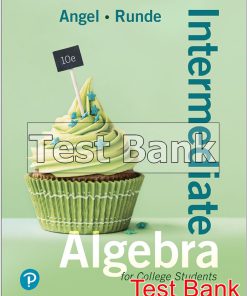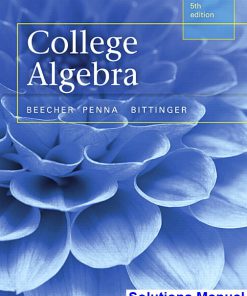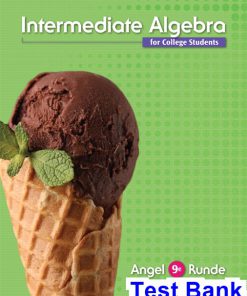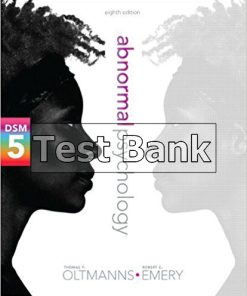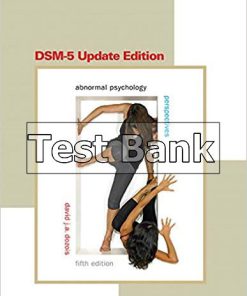- Chapter R Review of Basic Algebra
- R.1 The Set of Real Numbers
- R.2 Operations with Real Numbers
- R.3 Exponential Notation and Order of Operations
- R.4 Introduction to Algebraic Expressions
- R.5 Equivalent Algebraic Expressions
- R.6 Simplifying Algebraic Expressions
- R.7 Properties of Exponents and Scientific Notation
- The topics in this chapter are often taught in Intermediate Algebra and then again in College Algebra. Here, the repetition is eliminated.
- 1.1 Solving Equations
- 1.2 Formulas and Applications
- 1.3 Applications and Problem Solving
- 1.4 Sets, Inequalities, and Interval Notation
- 1.5 Intersections, Unions, and Compound Inequalities
- 1.6 Absolute-Value Equations and Inequalities
- We believe that functions and graphing should be introduced early and continue as a thread that runs through the course. This allows the instructor the opportunity to use the visual element of graphing to show students how solutions of equations, zeros of functions, and x-intercepts of graphs are related. This chapter blends function topics from Intermediate Algebra and College Algebra.
- 2.1 Graphs of Equations
- 2.2 Functions and Graphs
- 2.3 Finding Domain and Range
- 2.4 The Algebra of Functions
- 2.5 Linear Functions: Graphs and Slope
- 2.6 More on Graphing Linear Equations
- 2.7 Finding Equations of Lines; Applications
- This chapter covers systems of equations, a topic that is often taught in both Intermediate Algebra and College Algebra. This is another instance in which repetition of topics is eliminated. In addition, it includes linear programming, a topic that is traditionally in College Algebra but not in Intermediate Algebra.
- 3.1 Systems of Equations in Two Variables
- 3.2 Solving by Substitution
- 3.3 Solving by Elimination
- 3.4 Solving Applied Problems: Two Equations
- 3.5 Systems of Equations in Three Variables
- 3.6 Solving Applied Problems: Three Equations
- 3.7 Systems of Inequalities and Linear Programming
- 4.1 Introduction to Polynomials and Polynomial Functions
- 4.2 Multiplication of Polynomials
- 4.3 Introduction to Factoring
- 4.4 Factoring Trinomials: x2 + bx + c
- 4.5 Factoring Trinomials: ax2 + bx + c, a _1
- 4.6 Special Factoring
- 4.7 Factoring: A General Strategy
- 4.8 Applications of Polynomial Equations and Functions
- In this chapter, the student gets a solid basic coverage of rational expressions, rational equations, and rational functions as well as coverage of the difference quotient from College Algebra. This paves the way for studying more advanced College Algebra coverage of many of these topics in Chapter 8.
- 5.1 Rational Expressions and Functions: Multiplying, Dividing, and Simplifying
- 5.2 LCMs, LCDs, Addition, and Subtraction
- 5.3 Division of Polynomials
- 5.4 Complex Rational Expressions
- 5.5 Solving Rational Equations
- 5.6 Applications and Proportions
- 5.7 Formulas and Applications
- 5.8 Variation and Applications
- This chapter covers traditional Intermediate Algebra topics. In addition, now that the student has studied linear functions, polynomial functions of degree two and higher, rational functions, and radical functions, we have included the College Algebra topics of increasing functions, decreasing functions, and piecewise-defined functions. We weave together topics that are covered early in College Algebra and topics from Intermediate Algebra. (Note that complex numbers are covered in Chapter 7 along with quadratic equations rather than in this chapter.)
- 6.1 Radical Expressions and Functions
- 6.2 Rational Numbers as Exponents
- 6.3 Simplifying Radical Expressions
- 6.4 Addition, Subtraction, and More Multiplication
- 6.5 More on Division of Radical Expressions
- 6.6 Solving Radical Equations
- 6.7 Applications Involving Powers and Roots
- 6.8 Increasing, Decreasing, and Piecewise Functions; Applications
- This chapter blends traditional Intermediate Algebra coverage of quadratic equations with additional, more advanced topics that are traditionally associated with a College Algebra course.
- 7.1 Symmetry
- 7.2 Transformations
- 7.3 The Complex Numbers
- 7.4 Quadratic Equations, Functions, Zeros, and Models
- 7.5 Analyzing Graphs of Quadratic Functions
- Here, College Algebra topics regarding polynomial functions and rational functions are built on the solid foundation that was laid in Chapters 4 and 5.
- 8.1 Polynomial Functions and Models
- 8.2 Graphing Polynomials Functions
- 8.3 Polynomial Division; The Remainder Theorem and the Factor Theorem
- 8.4 Theorems about Zeros of Polynomial Functions
- 8.5 Rational Functions
- 8.6 Polynomial Inequalities and Rational Inequalities
- Traditionally, there is little difference in the Intermediate Algebra coverage vs. College Algebra coverage of the topics in this chapter. This is an excellent opportunity to eliminate repetition and thus streamline students’ investment of time and resources. Although inverse functions are often introduced earlier in a College Algebra course, we introduce them here so that they will be fresh in the students’ minds when they are used to show the relationship between exponential functions and logarithmic functions.
- 9.1 The Composition of Functions
- 9.2 Inverse Functions
- 9.3 Exponential Functions and Graphs
- 9.4 Logarithmic Functions and Graphs
- 9.5 Properties of Logarithmic Functions
- 9.6 Solving Exponential Equations and Logarithmic Equations
- 9.7 Applications and Models: Growth and Decay; Compound Interest
- These are the matrix topics that are traditionally taught in a College Algebra course, often along with systems of equations. Here they are presented in a separate chapter so that systems of equations could be covered earlier in the course with the more traditional Intermediate Algebra topics.
- 10.1 Matrices and Systems of Equations
- 10.2 Matrix Operations
- 10.3 Inverses of Matrices
- 10.4 Determinants and Cramer’s Rule
- In the topics of conic sections and nonlinear systems of equations we find another area of considerable overlap in Intermediate Algebra and College Algebra. This is another example of how repetition is eliminated.
- 11.1 The Parabola
- 11.2 The Circle and the Ellipse
- 11.3 The Hyperbola
- 11.4 Nonlinear Systems of Equations and Inequalities
- These are traditional College Algebra topics.
- 12.1 Sequences and Series
- 12.2 Arithmetic Sequences and Series
- 12.3 Geometric Sequences and Series
- 12.4 Mathematical Induction
- 12.5 Combinatorics: Permutations
- 12.6 Combinatorics: Combinations
- 12.7 The Binomial Theorem
- 12.8 Probability
People also search:
college algebra with intermediate algebra a blended course 1st edition
do you have to take intermediate algebra before college algebra
does intermediate algebra count as college algebra
is algebra 1 intermediate algebra
is intermediate algebra the same as college algebra
is intermediate algebra harder than college algebra




